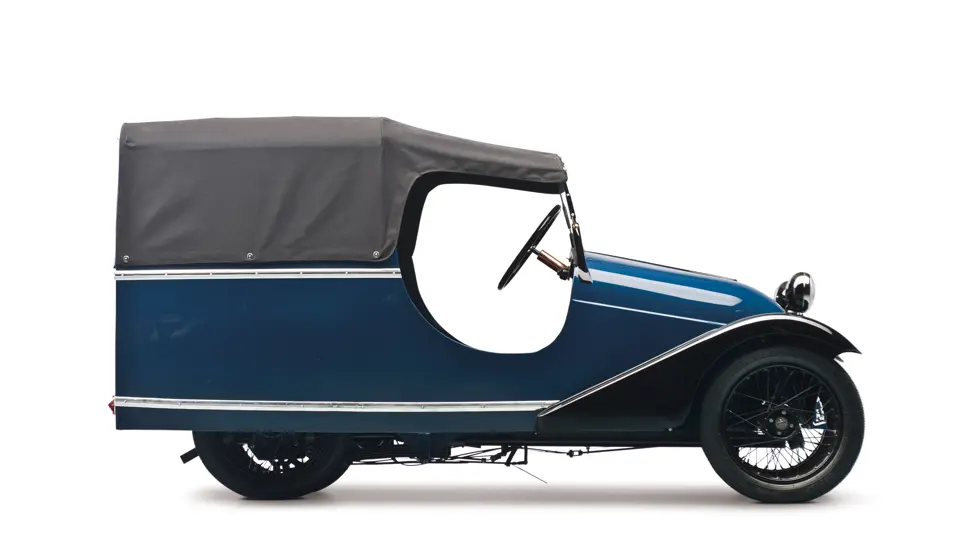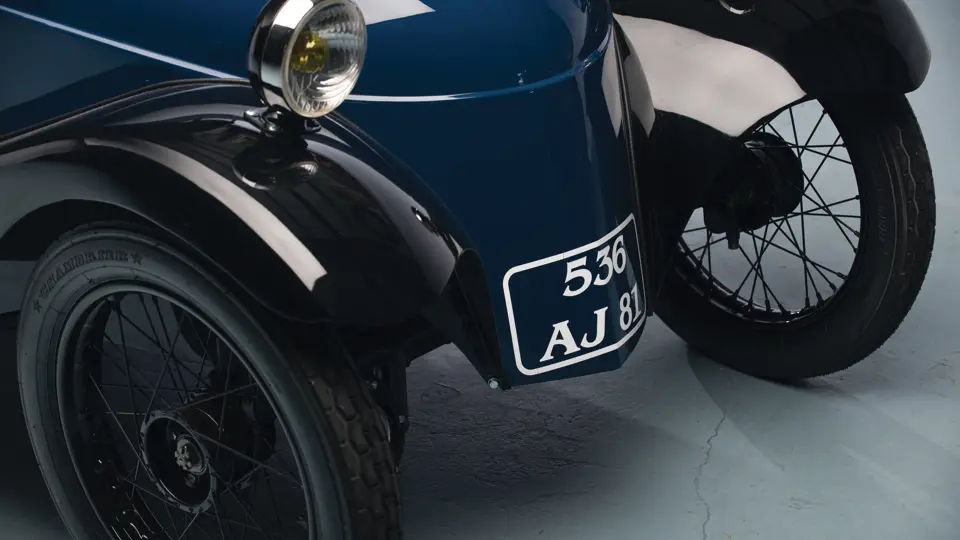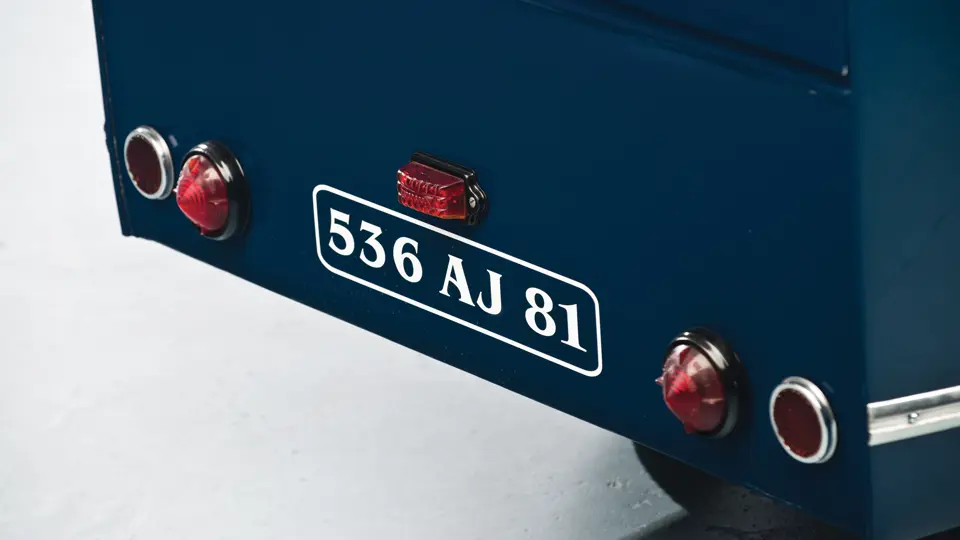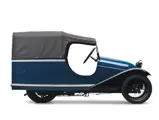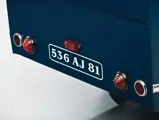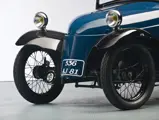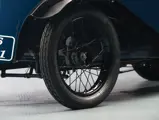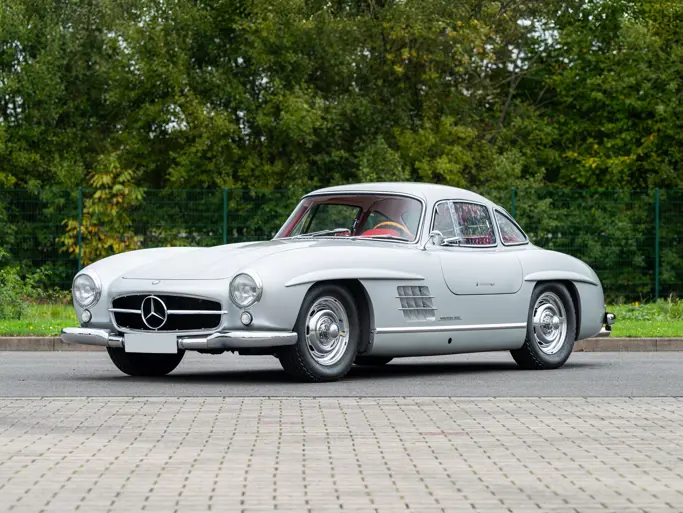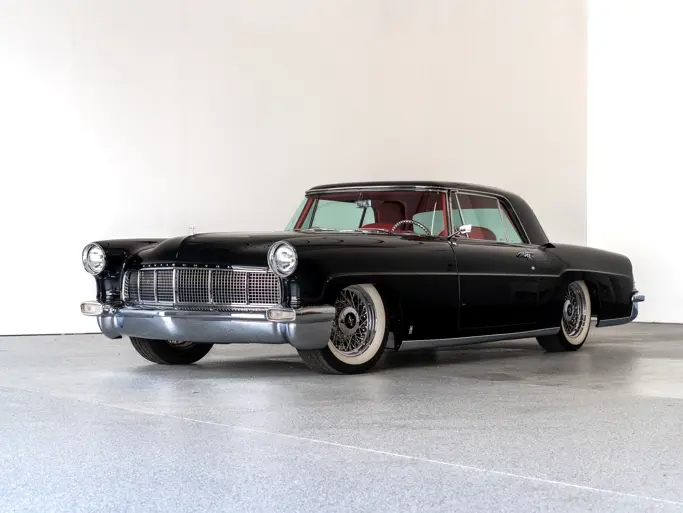Outstanding restoration quality.
SPECIFICATIONS
Manufacturer: Charles Mochet
Origin: Puteaux, France
Production: 1,250
Motor: Zurcher 1-cyl, 2-stroke
Displacement: 125 cc
Power: 3.5 hp
Length: 8 ft. 4 in.
Identification No. 3215
It is difficult to imagine, from our present perspective, how different the post-war years were in France. Horse-drawn wagons and carts were everywhere. The innovative wood or charcoal gas converters towed on trailers behind motorized vehicles were still very much a feature of everyday traffic. A great many of the superlative French pre-war cars had been destroyed or commandeered by the occupying forces, and only a fraction, perhaps hidden in haystacks and barns, survived the war. These were “The Grey Years.”
Mochet’s minimalist vehicles were a welcome addition to this landscape. First to enter the scene was the motorized pedal car, the Type H, which became the all-metal Type K. This evolved into the classic Mochet Roadster, the CM-125. But the pleasantly antiquated lines of the popular model needed updating in order to compete. Also, the new order required a small, inexpensive, commercial vehicle, as the popular Vespa Ape was demonstrating so well in Italy.
So it was no surprise that Mochet introduced two new models alongside the CM-125 Luxe in the fall of 1952, the CM-125 Commerciale and the pontoon-bodied CM-125 Grand Luxe. The Commerciale was a longer, slightly more heavy-duty version of the CM-125 Luxe. The body was lengthened by six inches, giving slightly more overhang at the rear. The sides of the rear compartment were brought up to a level higher than the dashboard, and a light frame of tubing was welded over the load space, which was covered by the canvas top cover. The extra structure made the Camionette four inches higher than the Luxe. An opening canvas flap at the rear could be rolled up to provide access, and the metal rear panel could be removed by undoing two bolts. The additional bodywork raised the weight from 365 to 400 pounds, still a very light vehicle indeed, and yet it could carry 330 pounds of goods, as well as two passengers. Tires were fatter, changed from 450x56 to 550x85.
At 230,000, 250,000, and 270,000 francs respectively, the three Mochet cars were still much cheaper than their closest small car rivals at the Paris Salon, with the Citroën 2CV at 342,000 francs and the Rovin 3CV at 362,000 francs. Also, the three CM-125s were available within weeks of being ordered from the small Mochet firm, where there was a waiting list of several years in 1949 for the Citroën, and many eschewed comfort to get back on the road immediately. This gorgeous Mochet CM-125 has been wonderfully restored in blue with black livery. The quality of its fit and finish, down to the smallest detail, is simply second to none.




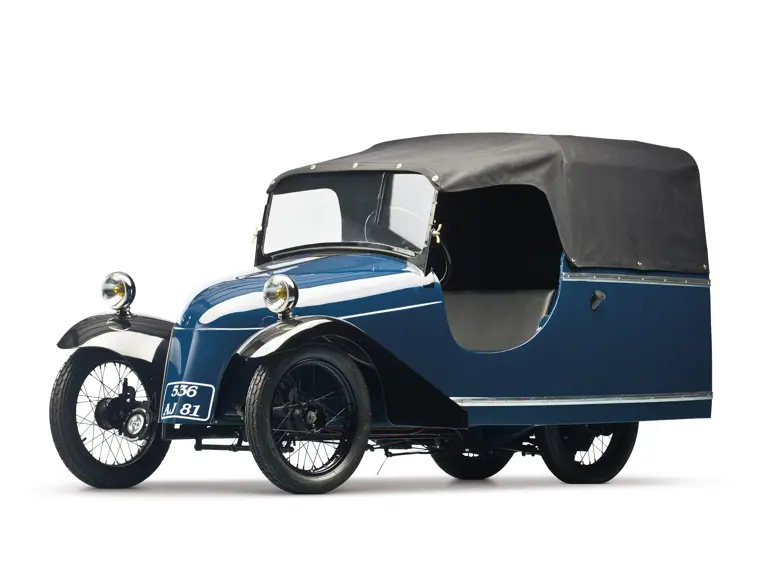
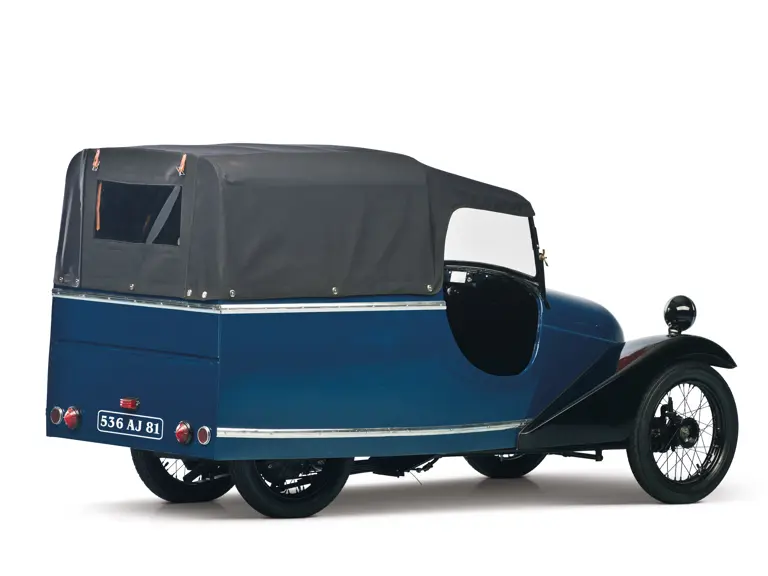
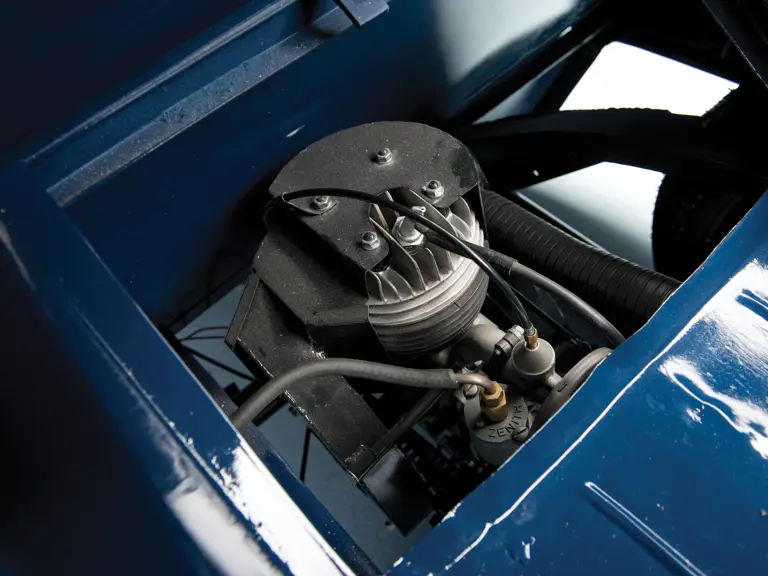
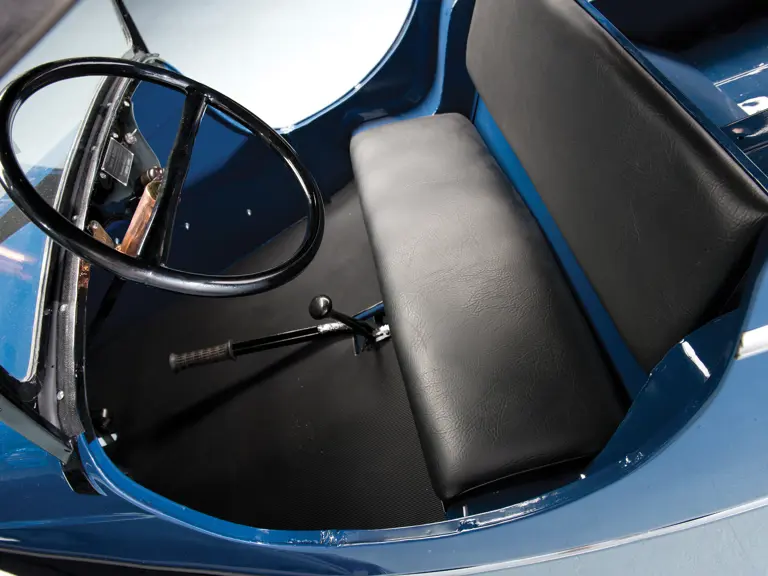
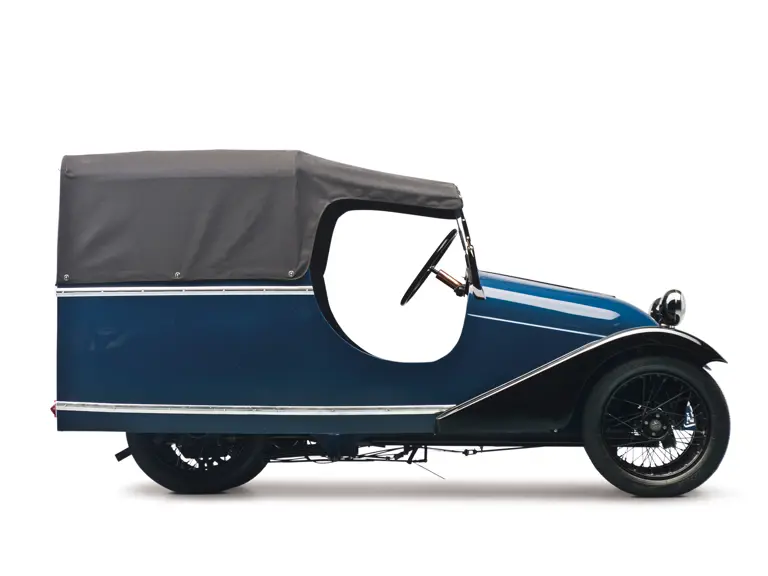

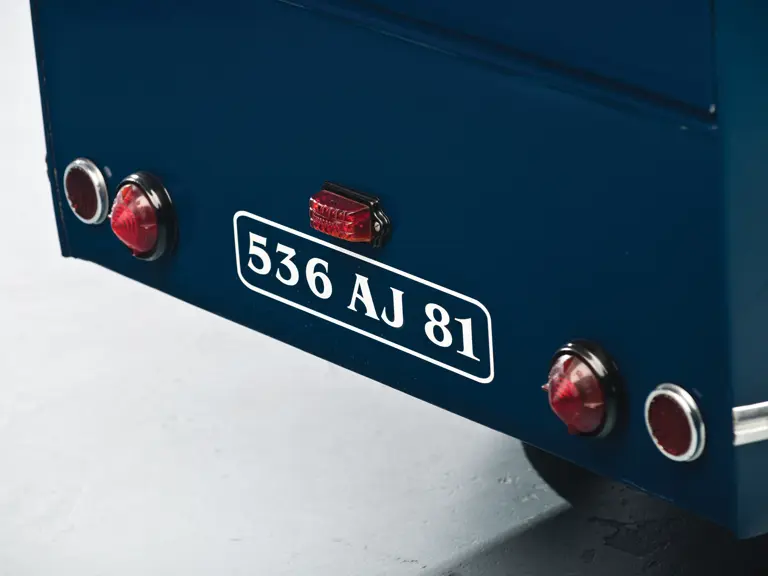
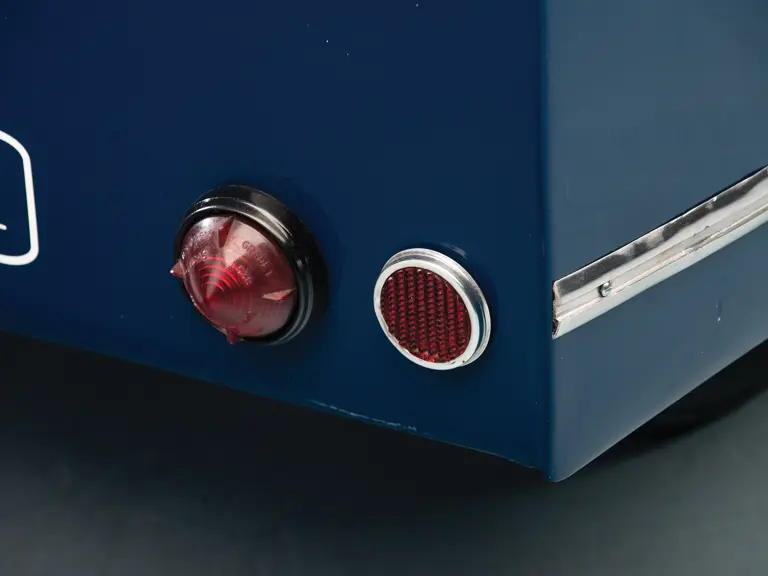
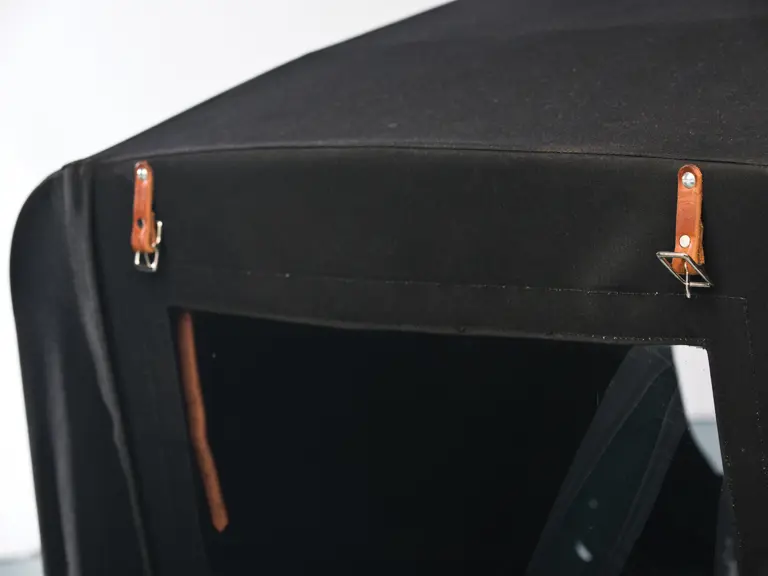

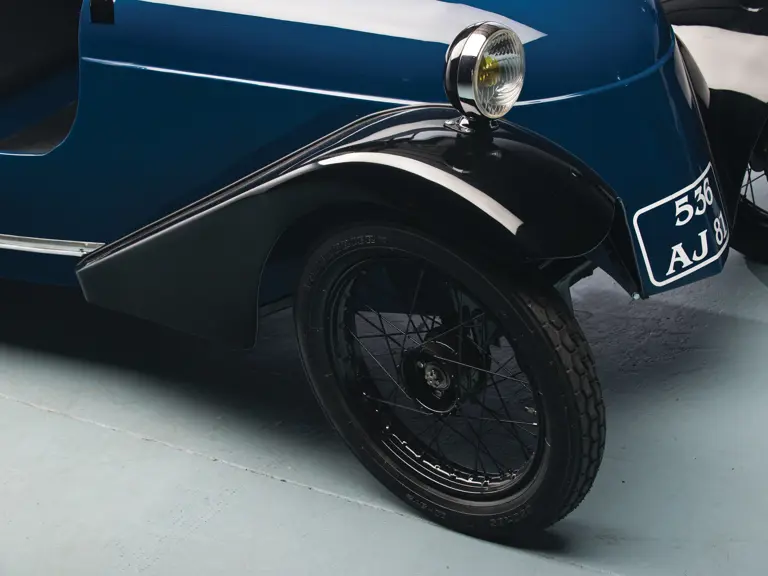
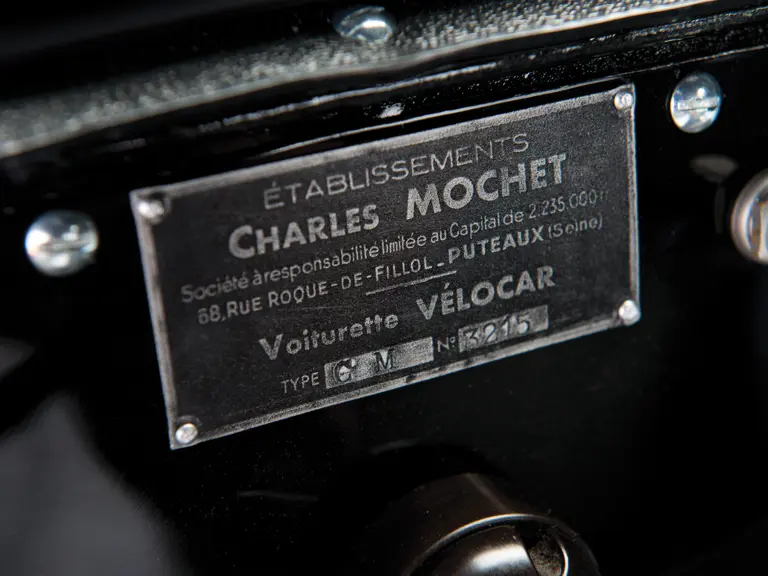
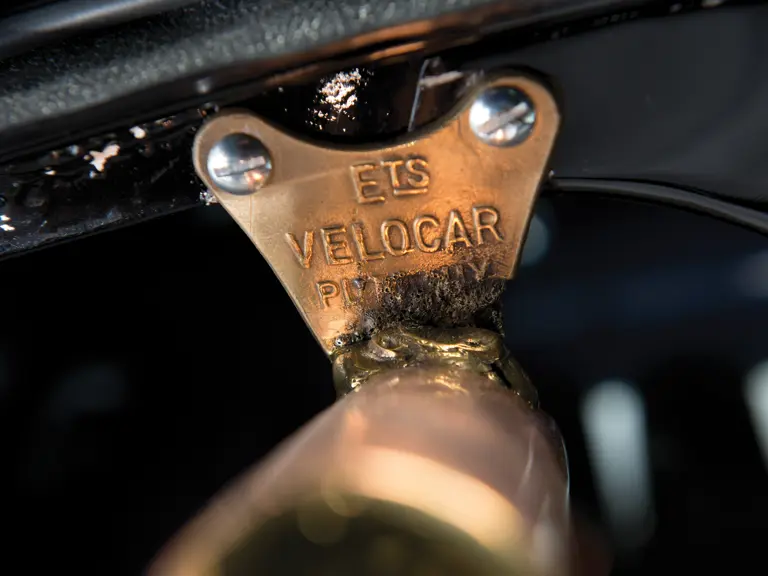


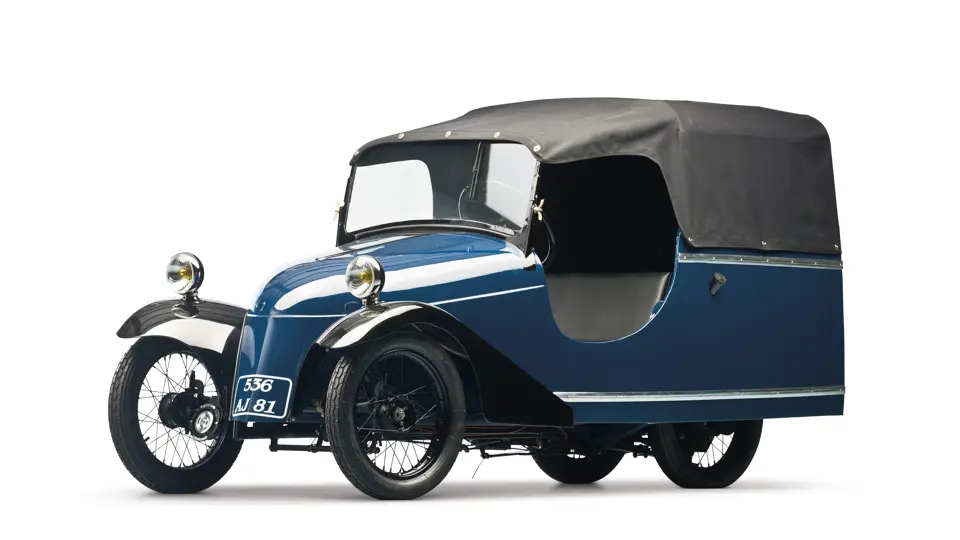
 | Madison, Georgia
| Madison, Georgia
